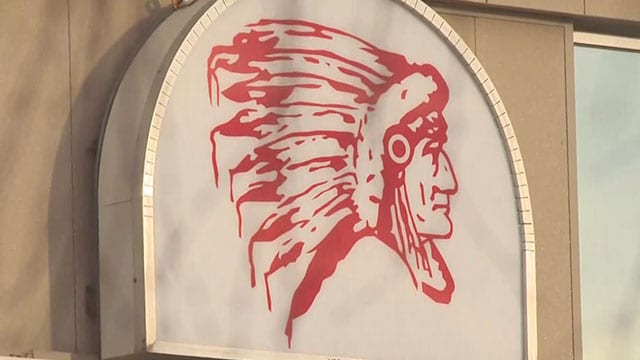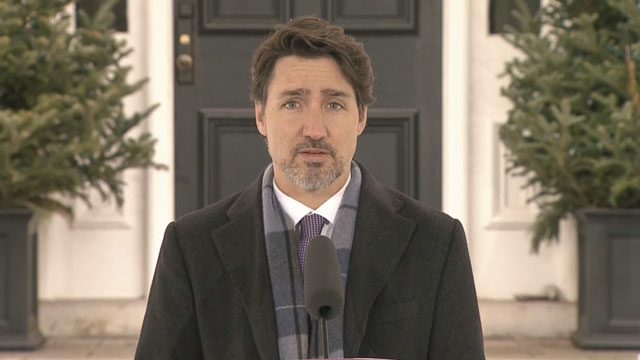
The House of Commons has passed a bill that greenlights the government’s $82-billion COVID-19 economic relief package but according to a letter sent to the government by Association of Iroquois and Allied Indians (AIAI), the money set aside for Indigenous communities won’t be enough.
“I think that money is going to run out pretty quick,” Grand Chief Joel Abram said about the $305-million Indigenous community support fund, which the package includes.
Abram, whose organization represents seven Ontario First Nations, said he sent the letter to Finance Minister Bill Morneau to make sure there is “enough flexibility” in the support fund given “this unprecedented and rapidly changing situation.”
“It is likely that the virus has already spread extensively in First Nations communities and we can expect a much greater number of cases in the coming weeks,” Abram wrote.
Abram added that First Nations face greater risk due to overcrowding, isolation, declining infrastructure, limited internet access and lack of healthcare resources. Because of higher rates of chronic illness and lower determinants of health, the letter said First Nations expect a much higher mortality rate.

(Prime Minister Justin Trudeau discussing the emergency relief measures on Tuesday.)
Meanwhile in Ottawa, a handful of MPs gathered on Parliament Hill to debate the emergency relief bill. Debate stalled after the opposition Conservative party accused the Liberal government of an “undemocratic power grab.”
The bill originally included powers to raise or change spending, borrowing and taxation levels until Jan. 21, 2022.
Outgoing Tory Leader Andrew Scheer balked at the measures.
Prime Minister Justin Trudeau, at his daily update outside his house, acknowledged the overreach.
“We have an opposition that is doing its job of making sure that we’re taking the right steps the right way and that’s why we’ve been working on drafting the right legislation up until the last minute,” he said.
Negotiations resumed and after brief debate the bill was passed. It will go to the Senate where it is expected to pass quickly.
“There’s 600-some First Nations. Dividing that $305 million by those you’re looking at half-a-million possibly for each community,” Abram said.
But the money is not only for First Nations.
Métis, Inuit and off-reserve organizations can use the money too.
“Indigenous organizations supporting urban Indigenous Peoples, such as Friendship Centres, will be eligible to access funds through the Indigenous Community Support Fund, details of which are being finalized,” Indigenous Services Canada (ISC) told APTN News in an email.
“Indigenous Services Canada understands that Indigenous Peoples living in urban centres face unique needs and challenges.”
The Federation of Sovereign Indigenous Nations (FSIN), which represents 74 Saskatchewan First Nations, pointed this out.
“The $305 million earmarked is for First Nations, Metis and Inuit to share. That is not enough to match the actual resources required to properly put in place preventative measures to deal with the spread of COVID-19,” said FSIN Chief Bobby Cameron in a media release.
“Our nations need additional medical equipment and supplies, including [personal protective equipment] PPE’s, medicines, oxygen tanks and masks, bronchodilators and steroids. We also need additional nurses and doctors to in our rural and remote communities, so our people don’t have to wait or travel for treatment if required.”
Indigenous Services Minister Marc Miller addressed these questions at a news conference Wednesday. He said more financial measure could be on the way.
“This is just the beginning. We know that more support will be needed and we will be there to make sure no Indigenous community is left behind. Our government is here to support you during this time,” he said.
“This is only one of the financial measures that we are contemplating for First Nations, Inuit and Metis.”
He also offered details about how the money will be divided.
“The First Nations portion of this is $215 million. Each First Nation will get a base amount adjusted for population, remoteness, and community wellbeing. The Inuit portion is $45 million and will flow to each of the four Inuit land claim organizations with allocation determined by ITK and regional leadership. For Metis there will be an amount of $30 million that will flow through each governing member,” he said.
“The remaining percentage, which accounts for $15 million, will go to supporting regional, urban and Indigenous organizations supporting those who live away from their communities.”
The government had shipped or delivered 78 requests for PPE and 105 more were in progress as of Monday, Miller previously said in a tweet.
Canada is working quickly to process personal protective equipment (PPE) requests to ensure indigenous communities are ready to respond to COVID-19 as effectively and as quickly as possible.
As of March 23:
– 78 PPE requests shipped or delivered;
– 105 in progress. #cdnpoli— Marc Miller ᐅᑭᒫᐃᐧᐅᓃᐸᐄᐧᐤᐃᔨᐣ (@MarcMillerVM) March 24, 2020
ISC also pointed out that the 2019 budget included $79.86 million over five years and $16.98 million ongoing for health emergency preparedness in First Nations communities.
The federal government also set a portion of $100 million aside for Indigenous communities on March 11 – the same day the World Health Organization (WHO) declared COVID-19 a pandemic.

(AFN National Chief Perry Bellegarde. Photo: APTN)
States of emergency
The Assembly of First Nations (AFN) declared a state of emergency because communities need more money and must be included in planning discussions with government, the organization said Tuesday.
“While the federal funding announced recently is a start, it is inadequate to meet the anticipated needs,” said National Chief Perry Bellegarde. “This is about the health and safety of First Nations families and communities. We need to act now.”
Ontario Regional Chief RoseAnne Archibald seconded the motion to declare the emergency.
“We recognize this $305 Million is not adequate but were assured [by] Minister Miller that no community would be left behind,” Archibald posted to social media.
Archibald added that the money will be sent to regional offices for distribution after the Senate approves the bill.
Neither Archibald, Abram or AFN said how much more money communities might need.
Archibald clarified that AFN’s emergency declaration is a “political tool” to spur action that “does not provide the AFN with legal powers.”
On Tuesday, Chiefs of Ontario (COO) said that 34 First Nations in the province had declared states of emergency.
Abram said that he raised the issue of emergencies in a conference call with Indigenous Services Minister Marc Miller.
“Because the province of Ontario had already declared an emergency it wasn’t really necessary for First Nations to do that as well in order to get reimbursed for money they spend,” said Abram of his call with Miller.
“Some First Nations are [declaring emergencies] anyway just as an assurance to their citizens or their members that they are taking it seriously. It’s more of a psychological effect at this point of making the actual declaration.”
On March 19, Miller emphasized that a community doesn’t need to declare an emergency to access funding.
“I want to be clear though that if a community declares a state of emergency, that is not a precondition to accessing this fund,” he told reporters at the COVID-19 committee briefing.
“They do so for their own reasons. They’re reasons that we respect, but they are reasons that declare their state of urgency and, in some cases, it allows them to move forward on a quicker basis with their own community planning.”
BrettForester











Please….how much IS enough?